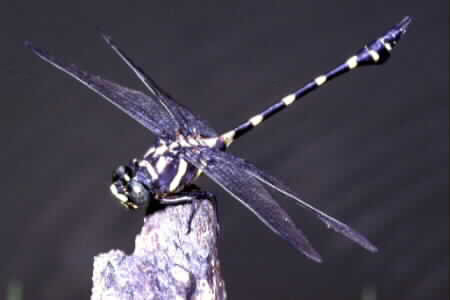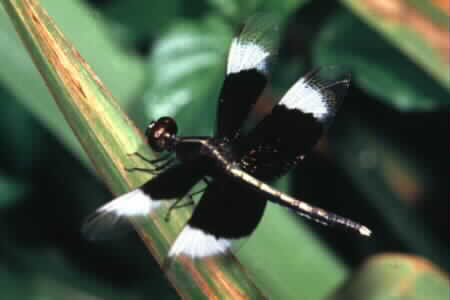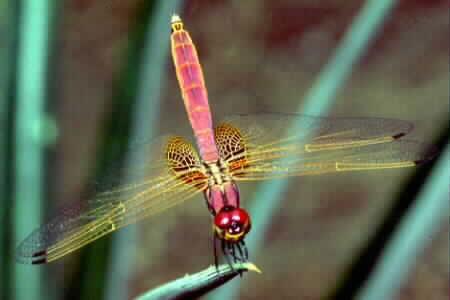The magnificent flying machine

A DRAGONFLY has eyes so large that they cover most of the insects head. In common with other insects, it has compound eyes made up of many
hexagonal facets, each containing a tiny lens. The iridescent eyes of the dragonfly are composed
of thousands of facets, ranging from 10,000 to 30,000 depending on the species.
It has been theorised that each of these tiny lenses records a small fragment
of the scene, and the insect sees the entire image as a mosaic. This is the mosaic theory of
insect vision first expounded by German physiologist Johannes Peter Müller in 1829.
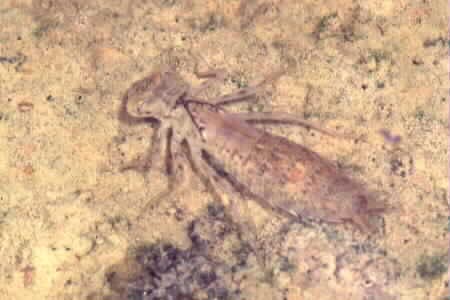 And the dragonfly has such large eyes the better to see. Scientists believe
that it has the best eyesight among insects. The highly convex shape of the eyes gives this
insect a very wide angle of vision. Because of its good eyesight, a dragonfly can hunt until
very late into the evening.
And the dragonfly has such large eyes the better to see. Scientists believe
that it has the best eyesight among insects. The highly convex shape of the eyes gives this
insect a very wide angle of vision. Because of its good eyesight, a dragonfly can hunt until
very late into the evening.
The dragonfly’s head is also extremely moveable, a further aid to vision.
The insect can turn its head sideways, and move it backwards, forwards and downwards. If you
have the opportunity, observe a dragonfly perched on a twig or a leaf, waiting for an insect prey
to fly within striking range. You will see that it constantly moves its head to survey its
surroundings.
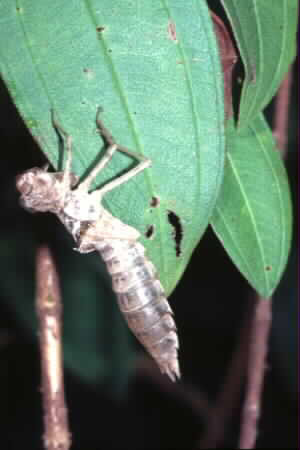 Good eyesight is not the only attribute of this entomophagous hunter
(meaning it eats other insects). It is a fast flier and capable of some very impressive aerobatic
manoeuvres. A member of the larger species can fly at speeds of nearly 100kph (60mph). It can
hover like a helicopter, maintaining its mid-air position with consummate skill, its diaphanous
wings glinting in the sunlight. It can fly vertically. It can stop or turn sharply in the midst
or rapid flight. It can even fly backwards. It is the magnificent flying machine that no man has
yet invented.
Good eyesight is not the only attribute of this entomophagous hunter
(meaning it eats other insects). It is a fast flier and capable of some very impressive aerobatic
manoeuvres. A member of the larger species can fly at speeds of nearly 100kph (60mph). It can
hover like a helicopter, maintaining its mid-air position with consummate skill, its diaphanous
wings glinting in the sunlight. It can fly vertically. It can stop or turn sharply in the midst
or rapid flight. It can even fly backwards. It is the magnificent flying machine that no man has
yet invented.
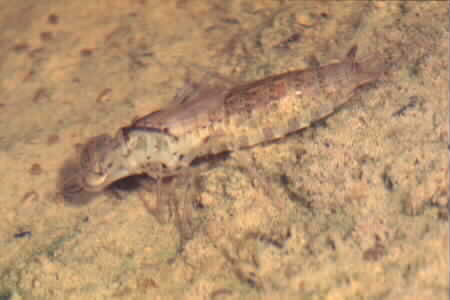 Being such an accomplished flyer, a dragonfly can easily snatch its prey
in flight. It begins tearing up its prey while still flying, and returns to its perch to finish
the meal. With its acute vision, extraordinary flight capability and voracious appetite, a dragonfly
is among the most fearsome predators in the insect world.
Being such an accomplished flyer, a dragonfly can easily snatch its prey
in flight. It begins tearing up its prey while still flying, and returns to its perch to finish
the meal. With its acute vision, extraordinary flight capability and voracious appetite, a dragonfly
is among the most fearsome predators in the insect world.
(This article was published in the December 1996 issue of Journal One.)
|







